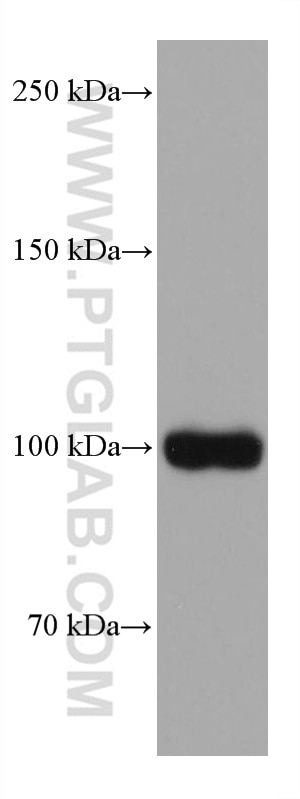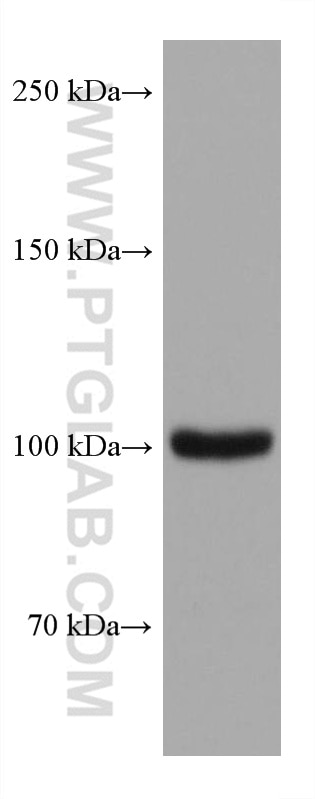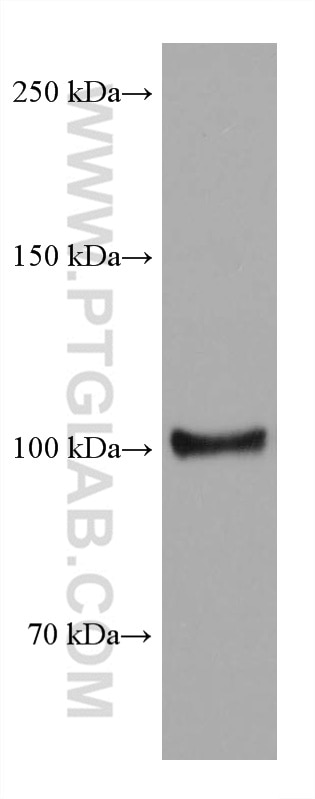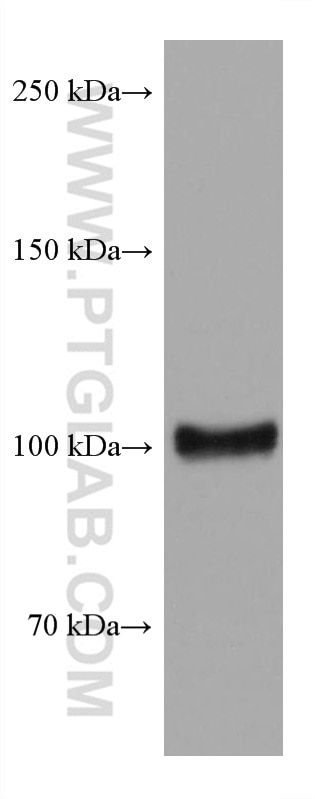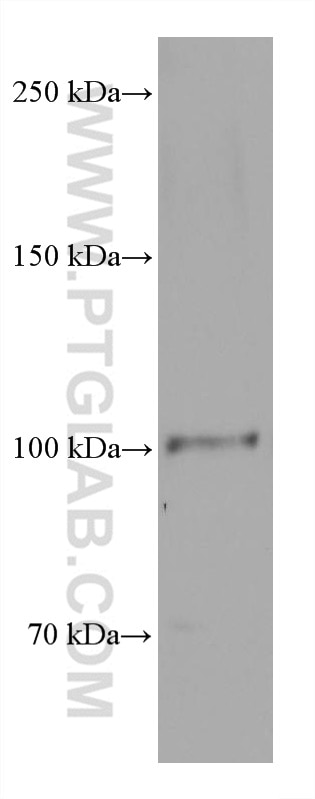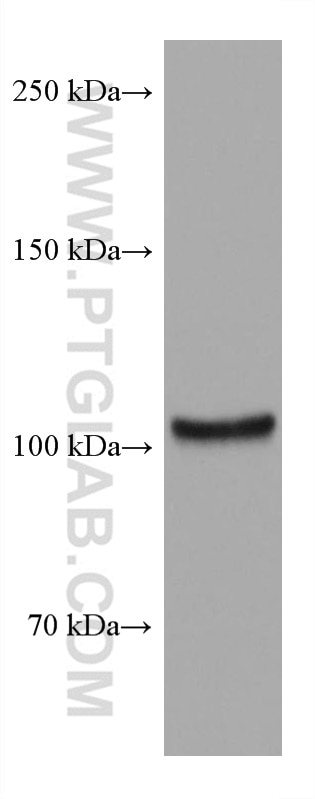Anticorps Monoclonal anti-TRPV1
TRPV1 Monoclonal Antibody for WB, ELISA
Hôte / Isotype
Mouse / IgG1
Réactivité testée
Humain
Applications
WB, ELISA
Conjugaison
Non conjugué
CloneNo.
1A3C9
N° de cat : 66983-1-Ig
Synonymes
Galerie de données de validation
Applications testées
| Résultats positifs en WB | cellules HepG2, cellules HEK-293, cellules HUVEC, cellules MDA-MB-468, cellules T-47D, cellules Y79 |
Dilution recommandée
| Application | Dilution |
|---|---|
| Western Blot (WB) | WB : 1:1000-1:6000 |
| It is recommended that this reagent should be titrated in each testing system to obtain optimal results. | |
| Sample-dependent, check data in validation data gallery | |
Applications publiées
| KD/KO | See 1 publications below |
| WB | See 15 publications below |
Informations sur le produit
66983-1-Ig cible TRPV1 dans les applications de WB, ELISA et montre une réactivité avec des échantillons Humain
| Réactivité | Humain |
| Réactivité citée | Humain |
| Hôte / Isotype | Mouse / IgG1 |
| Clonalité | Monoclonal |
| Type | Anticorps |
| Immunogène | TRPV1 Protéine recombinante Ag18683 |
| Nom complet | transient receptor potential cation channel, subfamily V, member 1 |
| Masse moléculaire calculée | 839 aa, 95 kDa |
| Poids moléculaire observé | 105 kDa |
| Numéro d’acquisition GenBank | BC132820 |
| Symbole du gène | TRPV1 |
| Identification du gène (NCBI) | 7442 |
| Conjugaison | Non conjugué |
| Forme | Liquide |
| Méthode de purification | Purification par protéine A |
| Tampon de stockage | PBS avec azoture de sodium à 0,02 % et glycérol à 50 % pH 7,3 |
| Conditions de stockage | Stocker à -20°C. Stable pendant un an après l'expédition. L'aliquotage n'est pas nécessaire pour le stockage à -20oC Les 20ul contiennent 0,1% de BSA. |
Informations générales
TRPV1, also named as VR1 or OTRPC1, belongs to the transient receptor potential (TRP) family and TRPV subfamily (PMID: 17579562). TRPV1 is a ligand-activated non-selective calcium permeant cation channel expressed predominantly by sensory neurons (PMID: 10821274). It is involved in detection of noxious chemical and thermal stimuli. TRPV1 plays an important role in inflammatory thermal hyperalgesia (PMID: 10764638; 10821274).
Protocole
| Product Specific Protocols | |
|---|---|
| WB protocol for TRPV1 antibody 66983-1-Ig | Download protocol |
| Standard Protocols | |
|---|---|
| Click here to view our Standard Protocols |
Publications
| Species | Application | Title |
|---|---|---|
Int J Mol Sci The Contribution of TSLP Activation to Hyperalgesia in Dorsal Root Ganglia Neurons of a Rat. | ||
Biochim Biophys Acta Mol Basis Dis Palmitic acid and trans-4-hydroxy-3-methoxycinnamate, the active ingredients of Yaobishu formula, reduce inflammation and pain by regulating gut microbiota and metabolic changes after lumbar disc herniation to activate autophagy and the Wnt/β-catenin pathway | ||
EBioMedicine Single cell RNA-seq analysis identifies ferroptotic chondrocyte cluster and reveals TRPV1 as an anti-ferroptotic target in osteoarthritis | ||
Int J Mol Sci Luteolin Alleviates Oxidative Stress in Chronic Obstructive Pulmonary Disease Induced by Cigarette Smoke via Modulation of the TRPV1 and CYP2A13/NRF2 Signaling Pathways | ||
J Inflamm Res Cannabidiol Inhibits Inflammation Induced by Cutibacterium acnes-Derived Extracellular Vesicles via Activation of CB2 Receptor in Keratinocytes | ||
Cell Calcium Liquiritin, a novel inhibitor of TRPV1 and TRPA1, protects against LPS-induced acute lung injury. |
Avis
The reviews below have been submitted by verified Proteintech customers who received an incentive forproviding their feedback.
FH Shihab (Verified Customer) (09-17-2021) | This antibody was tried in a cell type (cannot disclose) which has previously been shown to express plenty of TRPV1 signal. However, this antibody was unable to give any signal in various attempts at staining, even at 1:100 dilution. This is not to say that this anybody is not good because I have had trouble with various TRPV1 antibodies in this tissue type but it will be used in other cell/tissue type to see its staining capabilities
|
